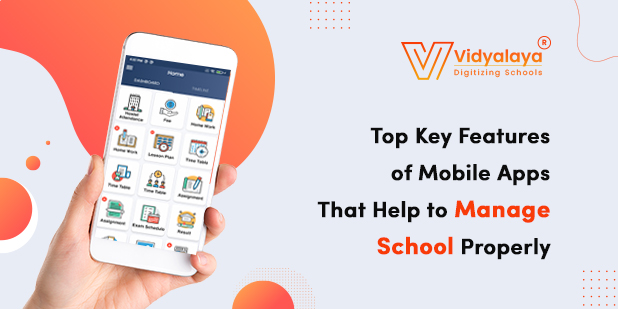Several academic institutions nowadays are implementing digital administrative procedures to boost management and operational efficiency.We’ve arrived at a point where schools can’t discern between corporate aims, expansion, and success and technical solutions. However, other schools are still on the fence, unsure whether current manual methods can help them with their jobs or if they need to be changed. Nonetheless, it is critical to recognize that institutions must understand their duties in the areas of education delivery, correctness, dependability, and authenticity of institutional activities.
Understand why your educational institution needs to implement a school management system while ignoring all conservatives.
1. Technically bridging communication:
In School Management Software, streamlined communication amongst institution stakeholders is a critical efficacy. A School Management System provides digital tools that connect one party to another whether the administration wants to send an urgent message to all parents, or a parent has to submit a complaint or communication between a student and teacher. To enable users to interact without lags, delays, or platform crashes, the system must include a simplified notification system.
2. Personalisation of the system:
School management systems can be tailored to meet the needs of individual students. Consider a school administrator who likes a reporting and analytics tool with movable dashboards. In that situation, a solution enabling software vendors might take this demand into account when creating the solution. Scalability, language switching, the use of individual themes and colours, and other characteristics were moulded into the School Manager System.
3. Improving educational delivery reliability:
Any educational institution’s principal function is to disseminate knowledge. The effectiveness of this feature has a direct impact on the schools’ and brand’s retention rate of students and teachers. Teachers can utilise School management Systems to organise student-centered lessons in which pupils who are hesitant to speak can communicate with their teachers via web portals. Instructors can work from home in the classroom, and all study materials can be shared on the cloud for all students to access. Teachers can also use School management System modules to automatically track student presence, prepare lessons, and schedule classes that do not conflict with other commitments.
As a result, to be a respectable educational organisation in the digital age, mobile-friendly education delivery is a must-have element. School Management Systems are the most effective options for achieving this efficiency.
4. Recognizing the importance of parenting:
In traditional educational systems, isolating parents from their children’s academic success is a constraint. A School Management System, on the other hand, recognises parents as active participants in their children’s education. School Management Systems effectively notifies parents about their children’s academic and skill advancement as a function of their academic performance; this serves as an inherent motivator for pupils to perform better. Parents can use this system to ask questions, make ideas, and contact the school at any time.
5. Easy-to-manage personnel:
HR managers or admins may use School Manager System to easily manage employee profiles, progress, and KPIs. The relevant officials can transparently share these facts with all departments within the institution, allowing the finance departments to make the required payrolls for performance, leaves, additive compensations, special bonuses, and so on. The system can be pre-programmed to make timely salary transfers to employees’ accounts. This demonstrates the team’s trust in the company’s commitment to employee retention.
6. Analytics and reporting:
Institutions can also use the digital tools provided by School Management Systems to develop financial year reports, analytical reports, transparent budget frames, and the appropriate analytical methodologies. To be enlightened and make risk-free changes to the institution, decision-makers, asset managers, financiers, and executives can employ interactive dashboards, extensive information reports, and all-inclusive reliable logical connotations obscured by old-fashioned data retrieval techniques.
7. Multi-school management:
School management systems can be used by schools with various branches in numerous locations since they are scalable and formable to match any institutional needs. They can serve as a cohesive approach to the entire corporation, as well as a collectively pervasive solution.
8. Resource management that works for schools:
In any school, there are numerous resources. The school would need constant access to books, stationery, uniforms, and a variety of other materials in order to deal with any planned or unanticipated circumstance at school. The school can utilise the Inventory Management Software in the School Management System to detect available supplies, forecast future stock levels, contact matched suppliers quickly, and allocate budgets by eliminating superfluous costs.
With its broad features, the school management system is significant since it facilitates school administration. The reasons listed above are the most common, but they are not the only shortcuts that School Management Systems provide to their institutional counterparts. Your school must be overlooking the benefits of School Management Systems accidentally.
However, when the correct questions are asked and the proper administrative disclosures are made, all educational institutions will come to the same conclusion: School Management Systems and institutional progress are inextricably linked.































